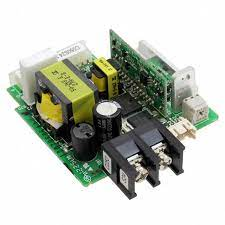Off board Power Supplies (OPS) are designed to deliver a limited amount of current through the cables. Current sensors on each rail cut off the supply when current levels reach the limit. Once the overload is removed, the current limit is reset. The average current limit of a POS is 17 A at 12 V, and 18.5 A +/ 8%. These limits are documented in the specifications. Identifying the current limit for each group of cables allows users to avoid placing high-current loads in the same group.
Isolated Power Supplies
Isolated off board power supplies are important for many applications. These devices are used in applications where power isolation is crucial, such as wireless smart-home IoT devices. A traditional AC power adapter or nine-volt battery used for guitar pedals does not provide isolation, so a power supply like the Voodoo Lab ISO 5 is necessary to overcome this problem. These power supplies are also expensive, as they take up extra space and add an additional cost. Some devices can get by without a power supply, however. Non-isolated power supplies are more efficient and can be used downstream.

While isolated off board power supplies provide better protection, they
are not completely inert. A typical isolation voltage of 10 kV is not enough to
prevent a power supply from blowing up. Therefore, any supply that fails a
hi-pot test is probably damaged. This is especially true if the supply is not
rated for 10 kV. Nonetheless, a power supply should be checked for this risk
before purchase.
Current Limit of 18.5 A +- 8%
Most off-board power supplies are limited in the amount of current they deliver through individual output cables. These cables are controlled independently by current sensors, and when they detect an overcurrent, they shut off the supply. This ensures that no more than 20 A can pass through any one cable. Most of these power supplies have a current limit of about 18 A, and if they exceeded this, they would automatically cut off before the output reaches 20 A. To avoid overheating the power supply, make sure the current limit is documented for each group of cables. If you have two separate high-current loads, don't put them in the same group.

All power supplies contain a current limit of at least 18.5 A. This
limit is a basic safety feature and is essential for many types of electronic
equipment. Current limiting is often implemented using a fuse and protects the
power supply as well as the upstream power source from damage. However, for
short bursts of excess current, a current limit of eight to twenty-five A + 8%
may be sufficient.
Costs of Off-Board Power Supplies
Off-board power supplies are a great choice for many applications. The
benefits of off-board solutions are many, and they often result in lower costs
and greater volume. A Class II power supply, for example, is a great choice for
OEMs because it eliminates the need for PCB layout and avoids noise and safety
considerations. Commercial off-board power adapters can also be inexpensive.
However, there are a few costs that must be considered before purchasing one.
Efficiency of Off Board Power Supplies
Off board power supplies can be divided into single-rail and multiple-rail designs. Single-rail designs allow a combination of output cables to be used, leaving safe allocation of load up to the user. Multiple-rail designs limit the output current to a fixed limit that the manufacturer specifies. Single-rail designs are more versatile but typically don't meet the demands of high-power computer equipment. Choosing between a single-rail and multiple-rail off board power supply is up to you, but make sure to check the specifications of each device before buying.

A DOE analysis of off-board power supplies (EPSs) uses a spreadsheet
model to determine the impact of the corresponding energy and cost savings.
These calculations are based on a range of assumptions, including typical
values, probability distributions, shipments projections, and estimated product
lifetimes and installed and operating costs. They also incorporate DOE's
cost-efficiency "curves" to evaluate the impacts of different
technologies on energy efficiency.
Noise
If you are experiencing noise from off board power supplies, you may be
looking for a solution. While most power supplies are not likely to be
dangerous, the noise that they produce can be irritating. If you find that your
power supply is generating noise, you should contact the manufacturer or
after-sales service to see if it can be fixed. It may not be necessary to
replace or adjust your power supply. It may be necessary to replace certain
components to eliminate noise.
A common source of off-board power supply noise is the capacitors. The
capacitors in these devices produce noise from force impacts in their magnetic
fields. This is the result of a reverse piezo effect in capacitors. After
physical construction and pre-production, the noise becomes recognizable.
Fortunately, a solution can be found. Listed below are some ways to find and
mitigate noise from off-board power supplies.
Reliability
Reliability of off-board power supplies is based on several factors, including a solid design with sufficient margins, quality components with appropriate ratings, and thermal considerations with appropriate derating. It also depends on a consistent manufacturing process. The probability of an intrinsic failure after 100,000 hours is around 90.5%, while the failure rate is about 60.6% after 500,000 hours. These two measurements often follow a bathtub curve.

Performing a full reliability assessment requires extensive statistical analysis techniques and data collection. These techniques include Levels of Confidence Assessment and Weibull multivariable analysis. Failures of one supply are only the beginning of a thorough reliability assessment. Field observations are also possible, but it is difficult to control all environmental factors and perform a reliable causation analysis. Reliability of off-board power supplies is crucial for mission-critical equipment, such as in nuclear power reactors.


Post a Comment